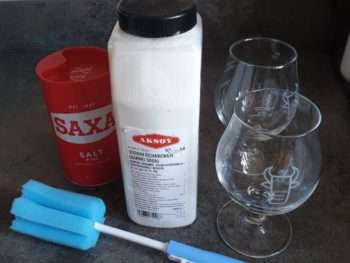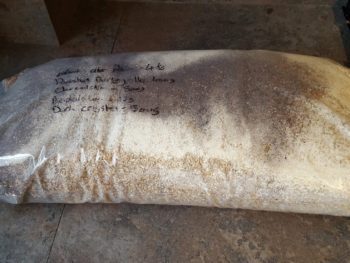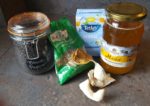Some of the rules you’ve been told may be homebrewing myths. Or if not exactly myths, they may be less important than you were led to believe.
Much brewing know-how has been passed down for hundreds of years. Some of the facts are from before science had figured out what yeast was. Little surprise, then, that some rules about brewing may actually be fake news.
I’m writing this post because everyone can benefit from discovering that not all the rules are cast in stone.
Liquid yeast is always better than dried yeast
Liquid yeast is definitely more expensive than dried yeast. But I don’t believe it has to be better.
Possibly it used to be true that liquid yeast was better. But nowadays, I think the main advantage is that there’s so much more variety.
For many home-brewers, I suspect the disadvantage of it being more difficult to care for liquid yeast outweighs the benefits, especially if you don’t live near to a good brew shop, and so have to rely on deliveries.
You need to move your beer into secondary fermentation
The theory is that you should move the beer into another fermentor, so that the beer isn’t resting on old dead yeast. Moving it is supposed to help with clarity, and avoid off-flavours due to your yeast going into autolysis.
I have never bothered, and it has never caused a problem with flavour. Though sometimes my beer hasn’t been quite as clear as I would like. But every time you move your beer from one vessel to another, you’re risking oxidization and contamination. I would say the risks outweigh the benefits.
And, in my view, anything that makes brewing easier and less labour-intensive has got to be a good thing. Because then you’ve got more time to be home-brewing, right?
All-Grain brewing is better than extract brewing
I’ve written more extensively on this topic here, but to summarise, extract brewing is quicker, and you’ll often find your results are more consistent. You’ll probably find that your very best beers are All-Grain. But you may find your more disappointing ones are, too.
There will also be periods where life gets in the way, and you can’t find time for an All-Grain brew day. Extract brewing means you’ve still got enough time to keep your hand in.
Home-brewing is cheaper
I don’t want to give mixed messages. And I did write a post titled “Is it cheaper to brew your own beer?” where I explained how little it costs to make a decent beer.
And yes, it’s true.
But what I didn’t mention is that you are going to start craving new equipment.
You’ll develop a peculiar fetish for shiny stainless steel and copper, and you’ll eventually, or quickly, tire of bottling your beer and decide you need to keg your beer and force carbonate it.
If I won the lottery, I would certainly drop a few thousand on brewing gear.
Yep. You may be immune to this, but you’re probably not.
Oh, yes. You may also find that your consumption rises a fair bit, too.
You need to chill your wort, fast!
Not a myth, necessarily, but an overstatement.
It can certainly help your beer if you use a wort chiller to cool it down quickly, but I don’t believe it’s necessary with all styles.
Aaron Collier did a secret experiment you can read at Brulosophy where he did a year of brewing using the no-chill method. This is a water-saving method developed by homebrewers in Australia, due to water restrictions during droughts, and because, anyway, the tap water just doesn’t get that cold for much of the year.
So instead of using a wort chiller, you simply decant your hot wort into a cube (a High Density Polyethylene container, such as the type of jerry can you’d use for camping), and leave it there to cool, sometimes over days or even weeks.
The theory is the boiling hot wort sterilises the cube, although I would personally want to sterilise it first.
Anyway, it certainly seems you can make award-winning beers using the no-chill method.
It also seems that while the method is fine for milds, dubbels, and stouts, the no-chill method can cause problems with hoppier beers such as pale ales and IPAs, especially with chill-haze. My own experience backs this up.
Adding table sugar makes your beer taste “cidery”
Not really. You most likely won’t notice this, unless it’s more than 10% of your fermentables.
There’s not a massive difference between brewing sugar and table sugar, and both are very fermentable.
Lots of Belgian beers use Candi sugar, which is fundamentally table sugar.
Aging Your Beer Makes it Better
If you crack open a beer five days after bottling, giving it just enough time to cool in the fridge, that’s going to be too soon. Give it a couple of weeks in the fridge, and you’ll enjoy the result of your labour better.
If you really want that beer now, tell yourself that you’re monitoring it’s development as it ages.
But really, anything beyond that first few of weeks, what you’re experiencing is less-fresh beer.
And if it’s stored in a cool, dark place, the aging process ought to be pretty much indiscernible. Feel free to try the same beer over time, but you’ll mostly find long-term aging of your beer will not improve it.
Particularly, hoppier beers. These will lose their vibrancy if not drunk when reasonably fresh.
The exception is with some of the stronger brews. If you’ve made a barley wine, your patience will be rewarded.
But generally speaking, you’re going to prefer your beer fresh.
Boiling Length
You’ll sometimes come across recipes that tell you to do a 90 minute boil.
I’m pretty sure that your beer will not benefit from an extra-long boil-time.
And you probably don’t need to do a 60 minute boil, either.
The boil really only needs to be as long as your hops require for bittering. If the recipe calls for 40 minute hop boil, you’ll get away with cutting your boil down to just the 40 minutes.
Beyond the bittering, the boil is really only supposed to sterilise the wort and maybe to add a bit of colour.
Why not treat yourself to saving some of your precious time, and also some of the world’s resources?
Brew-in-a-bag brewers shouldn’t squeeze their grain bag
I believed this because I read it in (the excellent) “How to Brew”. The theory is that squeezing the grain bag will result in a beer with too many tannins.
So I was trying to drain the bag, which took forever, made my arms ache, and did my back in.
It also meant that my efficiency was often for shit, having lost a large portion of the wort.
I later found out most BIAB-ers do actually try to squeeze-out as much wort as possible. Apparently, both pH and mashing temperature above 76°c have more to do with extracting tannins. So squeeze away!
Takeaway
Many of the rules do have a basis in truth, but don’t necessarily apply so much at a homebrewer-scale. Some have been conclusively disproved.
And some of them only apply to some styles. Who, for instance, cares about chill-haze in a chocolate stout?
Anyway, if you take anything away from this article, it ought to be to question the dogma, and to guard against simply following tradition for tradition’s sake.







 Belgian Witbier #2 – Brew Day 23rd July 2020
Belgian Witbier #2 – Brew Day 23rd July 2020





